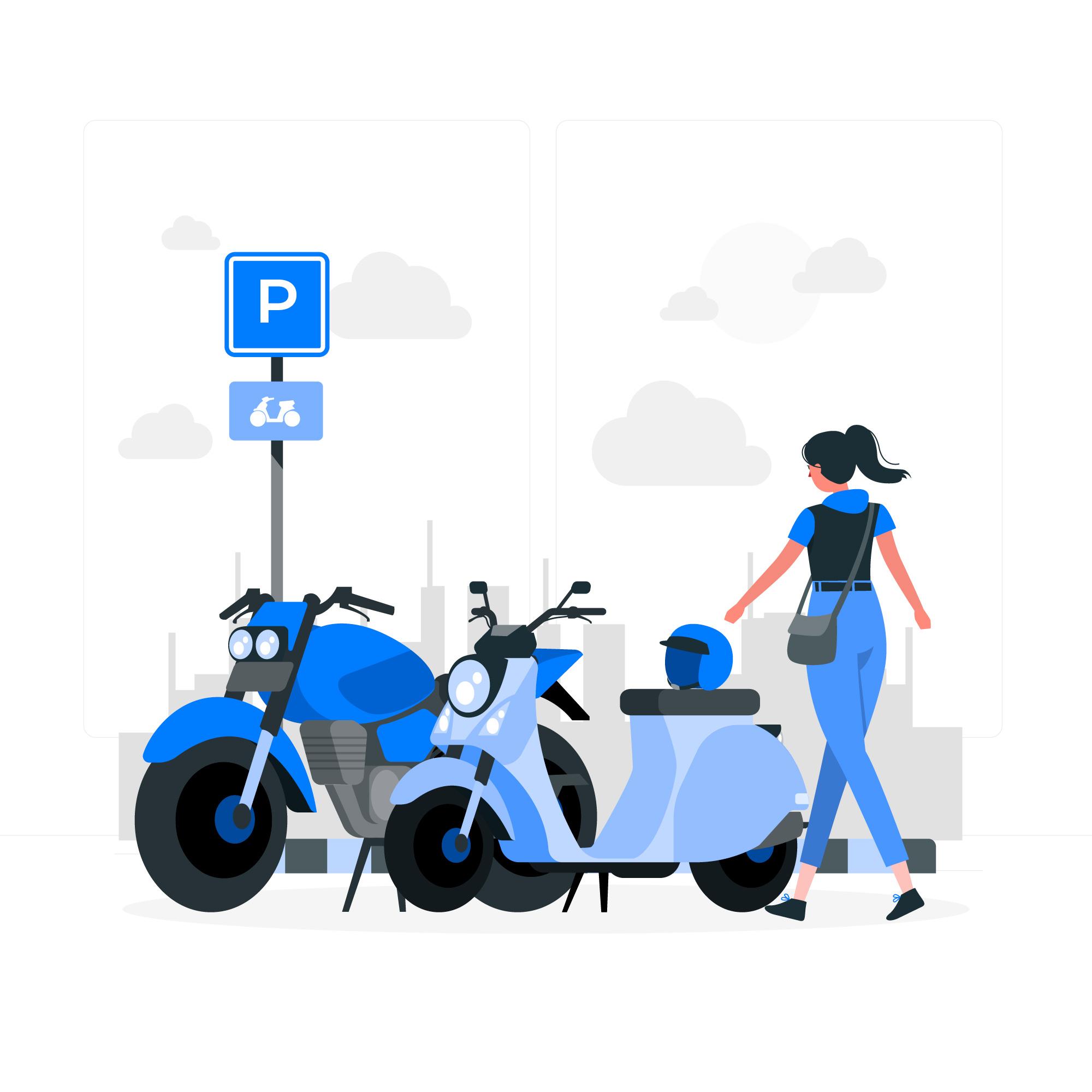

Finance
How Much Is Insurance For A Scooter?
Published: November 14, 2023
Looking to finance a scooter? Find out how much insurance will cost for your new ride and get the best rates with our comprehensive guide.
(Many of the links in this article redirect to a specific reviewed product. Your purchase of these products through affiliate links helps to generate commission for LiveWell, at no extra cost. Learn more)
Table of Contents
Introduction
When it comes to insuring your scooter, there are several important factors to consider. Whether you’re a seasoned rider or a beginner just getting started, understanding the ins and outs of scooter insurance can save you money and provide valuable protection in case of an accident or theft.
Insurance rates for scooters can vary significantly depending on a variety of factors, including the make and model of your scooter, your age and experience as a rider, the area in which you live, and the type and amount of coverage you choose. By understanding these factors and exploring your options, you can find the best insurance coverage at a price that fits your budget.
In this article, we’ll delve into the various factors that can affect scooter insurance rates, the types of coverage available, the average cost of scooter insurance, and some valuable tips for lowering your premiums. So, whether you’re a city dweller using a scooter for daily commuting or a weekend enthusiast enjoying leisurely rides, read on to find out more about how much insurance for a scooter might cost you.
Factors Affecting Scooter Insurance Rates
When it comes to determining the cost of scooter insurance, several factors come into play. Understanding these factors can help you get a clearer idea of why your insurance rates may be higher or lower.
1. Make and model of your scooter: The type of scooter you ride can greatly impact your insurance rates. Generally, more expensive and high-performance scooters will cost more to insure than smaller, less powerful models.
2. Age and experience: As with any type of vehicle insurance, your age and riding experience will be taken into consideration. Younger and less experienced riders are often seen as more prone to accidents, which can result in higher insurance premiums.
3. Location: Where you live plays a significant role in determining your insurance rates. Areas with higher crime rates or heavy traffic congestion are considered higher risk, and insurers may charge higher premiums for scooters in these locations.
4. Usage: How you use your scooter will also impact your insurance rates. If you primarily use it for commuting to work and back, you may be eligible for lower rates than someone who uses their scooter for recreational purposes.
5. Driving record: Your driving record is an important factor that insurers take into account. A history of accidents, traffic violations, or DUI convictions can result in higher insurance rates.
6. Storage and security: Having a secure location to park and store your scooter, as well as using anti-theft devices such as alarms or immobilizers, can help lower your insurance premiums.
It’s important to note that different insurance companies weigh these factors differently, so it’s worth shopping around and comparing quotes from multiple insurers to find the best rate for your specific situation.
Types of Coverage for Scooter Insurance
When it comes to insuring your scooter, there are several types of coverage you can choose from. Understanding these options will help you make an informed decision and select the coverage that best suits your needs. Here are the most common types of coverage available for scooter insurance:
- Liability Coverage: This is the most basic type of coverage and is typically required by law. Liability coverage helps protect you financially if you cause an accident that results in injury to another person or damage to their property. It provides compensation for medical expenses, property repairs, and legal fees.
- Collision Coverage: Collision coverage helps cover the cost of repairs or replacement if your scooter is damaged in a collision, regardless of who is at fault. This coverage is particularly important if you ride in areas with heavy traffic or have a higher risk of accidents.
- Comprehensive Coverage: Comprehensive coverage protects against non-collision-related incidents, such as theft, vandalism, natural disasters, or damage caused by falling objects. It provides coverage for repairs or replacement of your scooter if it’s damaged or stolen.
- Uninsured/Underinsured Motorist Coverage: This coverage protects you if you’re involved in an accident with a driver who doesn’t have insurance or has insufficient coverage. It helps cover your medical expenses and repairs in such situations.
- Medical Payments Coverage: Medical payments coverage helps cover the medical expenses for you and your passengers in case of an accident, regardless of who is at fault. It can help with hospital bills, doctor’s visits, and other medical costs related to the accident.
- Personal Injury Protection (PIP): PIP coverage goes beyond medical payments coverage and provides additional benefits such as lost wages and rehabilitation expenses. It is particularly useful if you rely on your scooter for transportation and want extra protection in case of an accident.
Keep in mind that the specific coverage options and their availability may vary depending on your location and the insurance company you choose. It’s always recommended to discuss your insurance needs with a licensed agent who can guide you through the available options and help you customize your coverage as per your requirements.
Average Cost of Scooter Insurance
The cost of scooter insurance can vary significantly depending on several factors, including the ones mentioned earlier. While it’s challenging to provide an exact average cost, we can provide a general range to give you an idea of what to expect.
On average, the annual cost of scooter insurance falls between $200 and $500. However, please note that this figure can be higher or lower depending on your specific circumstances. Factors such as your age, riding experience, location, and the type of scooter you own will all play a role in determining your premium.
Scooters with larger engine sizes and higher speeds generally have higher insurance premiums than smaller, low-powered scooters. Riders who are younger and less experienced may also face higher premium rates due to their perceived increased risk on the road.
Additionally, the level of coverage and any additional endorsements or features you choose to add to your policy will impact the cost. For example, opting for comprehensive coverage or increased liability limits may result in higher premiums.
It’s important to keep in mind that these are average costs, and individual quotes can vary significantly depending on the insurer and your unique circumstances. To get an accurate idea of the cost of scooter insurance for your specific situation, it’s best to contact insurance providers directly and obtain personalized quotes.
Comparing quotes from different insurers is also highly recommended. By obtaining multiple quotes, you can ensure that you’re getting the best coverage at the most competitive price.
Tips for Lowering Scooter Insurance Premiums
While scooter insurance is necessary for protecting yourself and your scooter from potential risks, there are several ways you can potentially lower your insurance premiums. Here are some helpful tips to consider:
- Choose a higher deductible: Increasing your deductible—the amount you’re responsible for paying out of pocket in the event of a claim—can lower your insurance premiums. Just make sure you choose a deductible amount that you can comfortably afford.
- Maintain a clean driving record: Having a clean driving record with no accidents or traffic violations demonstrates responsibility and decreases the perceived risk to insurers, which can lead to lower premiums.
- Take a safety course: Completing a recognized motorcycle or scooter safety course may entitle you to a discount on your insurance premiums. These courses offer valuable training and can help improve your riding skills, leading to fewer accidents.
- Bundle your policies: If you have other insurance policies, such as auto or home insurance, consider bundling them with your scooter insurance under the same provider. Insurers often offer multi-policy discounts, resulting in lower overall premiums.
- Install anti-theft devices: Investing in anti-theft devices such as alarms, immobilizers, or GPS trackers can reduce the risk of theft and potentially lower your insurance premiums.
- Store your scooter securely: Keeping your scooter in a secure location, such as a locked garage or storage facility, reduces the risk of theft or damage, which may result in lower insurance costs.
- Limit your mileage: Some insurance companies offer “low mileage” discounts if you don’t use your scooter regularly or only use it for shorter distances. Be sure to accurately estimate your annual mileage to potentially qualify for this discount.
- Shop around for the best quote: Insurance rates can vary significantly from one provider to another, so it’s crucial to compare quotes from multiple insurers. Be sure to consider both the coverage and the premium when making your decision.
Keep in mind that not all insurers offer the same discounts or have the same criteria for determining premiums. Be sure to inquire about any potential discounts or savings opportunities when obtaining quotes.
Lastly, reassess your insurance needs annually. As your riding experience grows, you may qualify for lower premiums or different coverage options. Regularly reviewing your policy and discussing your changing needs with your insurance provider can help ensure you’re getting the best value for your coverage.
Conclusion
Securing proper insurance coverage for your scooter is an essential step for protecting both yourself and your investment against potential risks. Understanding the factors that affect scooter insurance rates, the types of coverage available, and ways to potentially lower your premiums is crucial in making informed decisions.
While the average cost of scooter insurance can vary depending on several factors, such as the make and model of your scooter, your age, location, and driving record, it is generally between $200 and $500 per year. However, it’s important to remember that these figures are indicative and can be higher or lower depending on your specific circumstances.
When choosing scooter insurance, consider the various coverage options like liability, collision, comprehensive, uninsured/underinsured motorist coverage, medical payments coverage, and personal injury protection (PIP). Tailoring your coverage to your specific needs ensures optimal protection.
To potentially lower your scooter insurance premiums, you can increase your deductible, maintain a clean driving record, complete a safety course, bundle policies, install anti-theft devices, store your scooter securely, limit your mileage, and shop around for the best quote. These actions can help you find cost-effective insurance without compromising on coverage.
Remember that insurance needs may evolve over time, so it’s important to periodically reassess your policy and discuss any changes or new discounts with your insurance provider.
By being proactive in understanding the factors that influence scooter insurance rates and exploring ways to reduce costs, you can find the best insurance coverage that fits your needs and budget. So, whether you’re riding through city streets or enjoying scenic routes, ensure peace of mind knowing you have the right coverage for your scooter.














